Frank Foukal Lynching - Part 4
Vigilante justice widespread at time Frank Foukal was killed
Race, ethnicity, politics, labor unions resulted in lynchings
Printed in The Independent on March 27, 2012
By Bob Morgan - Special to Gulf Coast Newspapers
Part IV of a four-part series

The events that led up to and followed the lynching of Czech settler Frank Foukal of Silverhill in June 1919 were regrettably a sign of the times in America. On the other hand, the Foukal lynching did play out in court, and that makes the circumstances somewhat different from much of the vigilante justice of those days.
The America that existed in Frank Foukal's last years was one that was edgy and quick-triggered what with the backdrop of the First World War. Whether the war contributed to Foukal's death is uncertain, but the dark character of much that took place at the time is indisputable.
In 1916 California banned Japanese workers from joining labor unions. The following year Arizona passed immigration legislation that created a "barred zone" geographically that included India. No immigrants from countries within the barred zone were allowed in the state. That same year, 1917, Congress passed a national version of the "barred zone" that limited Asian immigration.
It wasn't all about immigration in the usual sense of the word; some of it was about national migration. In Chicago the Real Estate Board sought to stop the influx of blacks to that city until problems relating to crime and declining property values could be dealt with.
In Georgia, Leo Frank, a Jewish pencil factory supervisor, was accused in 1913 in the death of a 13-year-old girl employed at the factory. Due to national support for Frank, he was sentenced to life in prison instead of death. On Aug. 17, 1915, however, an armed mob went into the prison where Frank was held and took him. They drove Frank back to Marietta, Ga., where they hung him and warned Jewish merchants in town to close their shops and get out. The mob called upon "American Gentiles" to do their part in expelling the Jews.
The violence of the time wasn't all about ethnicity or race. As usual, it was about politics too. Union members faced the violence of vigilantes in part because of World War I, especially where the Industrial Workers of the World (IWW) were concerned.

WOBBLIES
IWW members came to be known as "wobblies." It's uncertain why they were referred to as such. Whatever, IWW opposed the policies of the American Federation of Labor (AFL), welcomed immigrants, blacks and women into their ranks, and many in the IWW didn't support U.S. participation in World War I. The unionists were often referred to as "anarchists."
In 1916, a lumber strike organized by the IWW resulted in violence in Everett, Wash. A sheriff's posse, made up of hundreds of "citizen deputies," confronted "wobblies" at a protest rally and a shooting broke out that resulted in five people being killed and 30 or more wounded, although the death toll might have been considerably higher. It is remembered as the "Everett massacre," something akin to the "Ludlow, Colorado, massacre" two years earlier. There, striking coal miners had set up a tent city and men, women and children were killed by the state militia, mine operators, and guards employed by the coal company. The attack occurred to supposedly prevent anarchy.
By Sept. 5, 1917, federal and local authorities conducted raids across the U.S., seizing IWW records and arresting hundreds of "wobbly" activists. Their crimes: labor organizing and "obstructing" World War I. That same year a faction of the Ku Klux Klan tarred and feather 17 IWW members in Oklahoma for not owning war bonds.
Two lynchings could conceivably have a bearing on the dynamics at work in the Frank Foukal killing in Baldwin County, that is, if Bill Young's observation about "hot tempers" and Bohemians being confused with Germans by hotheads is assumed. Both took place the year before the Foukal lynching.
The April 5, 1918, St. Louis Globe-Democrat told the story of Robert P. Prager, a Collinsville, Ill. man. Prager, 45, was hung by a mob of hundreds of men and boys. Prager was lynched for allegedly making disloyal utterances against the U.S. and President Wilson.
"This is the first killing for disloyalty in the United States, although many persons have been mobbed and tarred and feathered," the newspaper said.
The paper also noted that Prager "begged for mercy," claimed to be a loyal citizen whose "heart and soul were for the United States," but admitted being a "native of Germany." When those who lynched Prager were brought to trial, a jury acquitted them within minutes. What they had done, according to the court, was "patriotic murder."
Olli Kinkkonen, a Finn, was tarred and feathered and hung. The authorities in Minnesota called it a suicide. The Knights of Liberty, the same KKK faction that tarred and feathered IWW workers in Oklahoma the year before, were responsible for the lynching. Kinkkonen was called a "slacker" – a person who refused to join the military. Those who knew him said he wasn't anti-war or a member of any labor groups. It's worth noting that there was a great deal of anti-Finnish feelings in that section of the country and Finns constituted a significant part of IWW membership.

LOCAL HISTORY
Shirley Stephens, librarian at the Oscar Johnson Memorial Library in Silverhill, said the library has a copy of Bill Young's "Czech Mate." She said Silverhill is probably the only library in the area that has a copy. She also notes the book is self-published and written after 1999; that's the year Rose Foukal, wife of Walter Foukal – Frank's son – died. Bill Young, you see, married Rose's daughter and his book is based on letters that were found in the attic of Rose's home after her death.
According to records of the Silverhill Cemetery, Walter, Rose's husband, died in 1984.
It goes without saying that life went on after Frank Foukal's lynching. "Tiny," Frank's wife, raised Walter and "Lillie" on the farm. Walter was 11 and his sister 9 when "Tiny" remarried in 1923. Her husband was a "Moravian." She would divorce him in 1938 due to his cruel ways; that according to Bill Young's account.
In 1934 Walter left this area and went to Idaho to work on a cousin's farm. It was while he was in Idaho, in attendance at one of those "halls" the Czech people were famous for, that he met 15-year-old Rose. They were eventually married in Buhl, Idaho, on Oct. 26, 1936. A few days later they headed south for Alabama where they would live and farm.
Shirley Stephens said she has heard about the Frank Foukal lynching but adds, "I don't know exactly where.
"Most of the towns in Baldwin County were settled by certain ethic groups," she said, when asked if she had ever heard about Czechs being discriminated against during the World War I era.
It's a point made as well by John Jackson, director of the Baldwin County Department of Archives and History in Bay Minette.
"I wouldn't expect it," he said of discrimination against Czechs locally in the years leading up to and during the First World War. "I would see it exactly the opposite. There was a large German contingent (in the county). There were probably more Europeans than (native born) Americans."
Jackson said he wasn't familiar with the lynching of Frank Foukal. He did note the name "Bishop" is a prominent one in county annals and the lynching incident probably occurred as a result of what Jackson called the death of "a member of an entrenched family."
The Baldwin Times' coverage of the trials of those arrested for lynching Frank Foukal seems to substantiate Jackson's supposition. A July 17, 1919, article on the problems of picking out a jury for Louis Bishop's trial said this about the family: "The wide family connection of the Bishops also made the task difficult, as the family is connected with almost every other in the county by either blood or marriage."
Stephens, the librarian, does note that in the early days of the Silverhill settlement the Swedes lived in town and the Czechs on the outskirts. When a Swede and Czech married each other on one occasion, Stephens referred to it as "practically a race riot" that occurred in town. She concurs with Frankie Kucera's observation that it was the schooling of the young that brought the two groups together.
She also agrees with Bill Young's assessment of "hot tempers" starting trouble back in those days in Baldwin County.
Whether the alleged discrimination that Kenneth H. Zezulka, the consul of the Czech Consulate in New Orleans, cites was a primary or secondary factor in the lynching of Frank Foukal will perhaps never be known. Then again, maybe what resulted in the killing of two men was all about a misunderstanding over a mule and nothing more, as John Jackson and others would probably conclude. What is evident, however, is the historical silence locally regarding the lynching of Frank Foukal in 1919.
Elvin Ewing of Silverhill, who knows well the records of Silverhill Cemetery, is another person who has never heard of the Frank Foukal lynching. Asked if he knew where a Frank Foukal was buried, he said no; perhaps in one of the cemetery's unmarked graves, he added.
Perhaps so few today know the story of Frank Foukal for the very reason cited by The Baldwin Times 93 years ago. The trials were over; the accused were punished – "not severely," according to the July 24, 1919, issue – and it was time to move on.
"We want all outsiders to draw the mantle of charity over our recent unfortunate occurrence, while we ourselves will let the curtain of oblivion blot (i)t from memory, as we strive in the future, as one big family, to be a better and happier people."

The following newspaper clippings mention Frank Foukal. They were taken from The Fairhope Courier, The Baldwin Times of Bay Minette, Alabama and The Onlooker of Foley, Alabama and The Montgomery Advertiser.
Click to enlarge each clipping.
Printed in The Baldwin Times 9 times
from Thu. Mar. 27, 1919 through May 29, 1919

|
Printed in The Baldwin Times
Thu. Jun. 5, 1919

|
Printed in The Baldwin Times
Thu. Jun. 12, 1919

|
Printed in The Montgomery Advertiser
Mon. Jun. 23, 1919

|
Printed in The Montgomery Advertiser
Mon. Jun. 23, 1919

|
Printed in The Montgomery Advertiser
Tue. Jun. 24, 1919

|
Printed in The Baldwin Times
Thu. Jun. 26, 1919

|
Printed in The Montgomery Advertiser
Thu. Jun. 26, 1919

|

Headline on front page of The Montgomery Advertiser
Wednesday July 2, 1919
Printed in The Montgomery Advertiser
Sun. Jun. 29, 1919

|
Printed in The Montgomery Advertiser
Tue. Jul. 1, 1919

|
Printed in The Montgomery Advertiser
Tue. Jul. 1, 1919

|
Printed in The Montgomery Advertiser
Wed. Jul. 2, 1919

|
Printed in The Baldwin Times
Thu. Jul. 3, 1919

|
Printed in The Montgomery Advertiser
Sun. Jul. 6, 1919

|
Printed in The Montgomery Advertiser
Tue. Jul. 8, 1919

|
Printed in The Baldwin Times
Thu. Jul. 10, 1919

|
Printed in The Montgomery Advertiser
Thu. Jul. 10, 1919
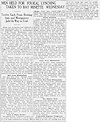
|
Printed in The Montgomery Advertiser
Sat. Jul. 12, 1919

|
Printed in The Montgomery Advertiser
Tue. Jul. 15, 1919

|
Printed in The Montgomery Advertiser
Tue. Jul. 15, 1919

|

Headline on front page of The Montgomery Advertiser
Wednesday July 16, 1919
Printed in The Montgomery Advertiser
Wed. Jul. 16, 1919

|
Printed in The Montgomery Advertiser
Wed. Jul. 16, 1919

|
Printed in The Baldwin Times
Thu. Jul. 17, 1919
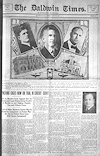
|
Printed in The Baldwin Times
Thu. Jul. 17, 1919

|
Printed in The Montgomery Advertiser
Thu. Jul. 17, 1919

|
Printed in The Montgomery Advertiser
Thu. Jul. 17, 1919
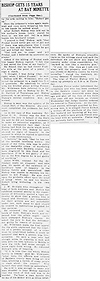
|
Printed in The Montgomery Advertiser
Fri. Jul. 18, 1919

|
Printed in The Montgomery Advertiser
Fri. Jul. 18, 1919

|
Printed in The Fairhope Courier
Fri. Jul. 18, 1919

|
Printed in The Fairhope Courier
Fri. Jul. 18, 1919
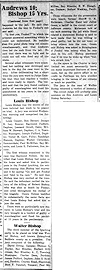
|
Printed in The Montgomery Advertiser
Sun. Jul. 20, 1919

|
Printed in The Montgomery Advertiser
Tue. Jul. 20, 1919

|
Printed in The Baldwin Times
Thu. Jul. 24, 1919

|
Printed in The Montgomery Advertiser
Thu. Sep. 18, 1919

|
Printed in The Montgomery Advertiser
Fri. Sep. 19, 1919

|
Printed in The Montgomery Advertiser
Fri. Nov. 21, 1919

|
Printed in The Baldwin Times
Thu. Nov. 27, 1919

|
Printed in The Montgomery Advertiser
Tue. Dec. 9, 1919
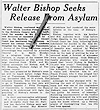
|
Printed in The Montgomery Advertiser
Sun. Dec. 21, 1919

|
Printed in The Montgomery Advertiser
Mon. Dec. 22, 1919

|
Printed in The Montgomery Advertiser
Wed. Jun. 2, 1920

|
Printed in The Baldwin Times
Thu. Jun. 3, 1920

|
Printed
Thu. May 5, 1921
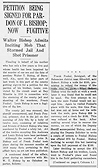
|
Printed
Thu. May 5, 1921
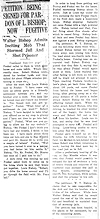
|
Printed in The Fairhope Courier
Fri. Jul. 27, 1923

|
Printed in The Montgomery Advertiser
Thu. Jun. 30, 1949

|
|
|

|